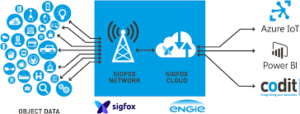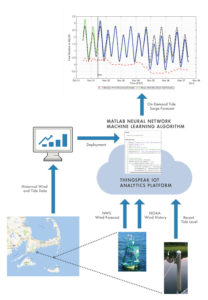The Internet Of Things (IoT) is a (not so) recent phenomenon that is becoming more important thanks to the new technologies used to solve all the problems stated by the IoT world. From my point of view, these problems are mostly related to
- the way on how the IoT devices are interconnected (networking)
- the environment where the devices are working in
- the way on how the devices get and send relevant information (sensoring/coding)
- the way on how the devices react to the stimulus (actuation)
The networking problem is related to the identification of the millions of new devices connected to the network and the enormous amount of information that is traveling from ones to the others and to the final user. And also, for all those autonomous devices (working with no cable nor power line nearby, let’s say the 99% of IoT devices) the little handicaps will become the signal coverage and the power consumption. Nice landscape to researchers and developers!

On the other hand, the sensors and SBCs (Single Boards Computers that support the sensors/actuators) have to act in a great diversity of non-friendly environments ( outdoor, m
arine, buried…). This opens an interesting path tho all those engineers that work with 3D printers in order to create new designs that can adapt to the changing and adverse IoT working conditions (waterproof cases, automatic open/close compartments…).
Finally I want to talk about the difference between a simple IoT device and a much more complex smart IoT project.
-

Fig. 2. IoT project for the smart tide predicion the IoT devices have no other functionality that react to an external stimulus (given by a sensor or by the user itself). There are many examples: domotics (rolling blind going up/down depending on the daylight level), home security (an alarm is triggered when an intruder is detected)… All these examples are very easy to implement and I do not consider them as smart devices
- smart IoT projects, that are complex implementation (usually) including a network of IoT devices that receive different information from all around (not only from the sensors but also from the internet, for example). The main feature of a mart project is the ability to think and react in the same way that you would do. Then the network of IoT devices needs an extra of added intelligence composed by code and algorithms (machine learning algorithms with a neural network, for example) distributed in cloud servers and platforms that process inputs and generate coherent responses (actions). You have a good example about wat is a smart IoT project in [2]
Summary
The IoT world is not so easy as it seems and the fact to interact with it (in developer mode) includes to deal with (and solve) a series of problems: device autonomy in terms of networking (quality of the coverage for a good wireless conection) and power consumption (self powering or at least low power consumption), environment robustness, data acquisition and codification, data processing (cloud platforms, cloud servers…)
References
- Hwaiyu Geng et. al. (2017), «Internet Of Things and Data Analytics Handbook», Ed. Wiley
- Robert S. Mawrey (2017). «Developing an IoT Analytics System with MATLAB, Machine Learning and ThingSpeak«. Technical Articles and Newsletters, MathWorks
Great summary. I agree with the differentiation between simple and «smart» IoT devices as there are definitely many more obstacles once you are trying to integrate information coming from different sources and mediums. That being said, I do believe that out of the solutions that will be found to overcome these obstacles, the «IoT world» and connected devices, in general, will gain a lot of value which will lead the technology world forward.